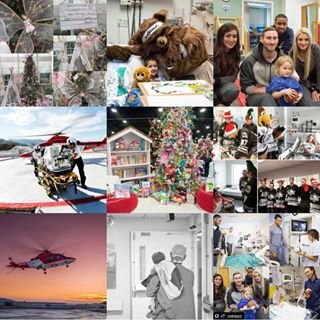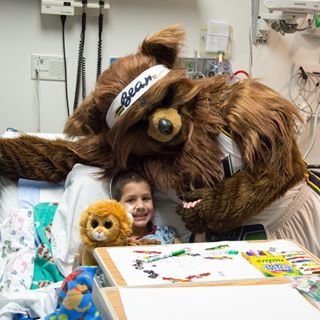With summer vacations in full swing, jetting off to Disneyland or a sandy beach may be a dream come true for your family, but if you have a child with disabilities, a medical, or behavioral condition, flying can be challenging or maybe even impossible.
If you do want to fly, here are some general tips that may make your flight a little less complicated.
Plan Ahead
Check with your airline before you book your flight.
Airlines are required by law to accommodate passengers with disabilities, but airline policies may vary. Depending on your child’s condition, the airline may require that you carry a doctor’s letter of approval for travel, carry copies of prescriptions for medications or medical devices, arrange for an assistant to help with transport, or take other measures. Every air line has a web page that states their policies, but it is always better to talk to an agent about your child’s specific needs before you buy your tickets.
It may also help to ask about the airline’s busiest days and times for your destination - then avoid those flights. Traveling a red eye may help because of less people, less noise, and less stress. And often the airfares are cheaper which is always a plus.
It might be a good idea to bring along a copy of the Aviation Consumer Protection and Enforcement Law in case you come across an airport employee who is not familiar with the law.
When you are ready to book your tickets, tell the reservation agent about your child’s needs.
The agent will not pry about the disability, but the more information you can give about what your child will need to make the flight less stressful, the more helpful the airline can be. You should mention emotional or behavioral issues as well as physical or medical. You should also ask questions about the type of aircraft that will be used for that flight as that can make a difference on accessibility and seating. With advance notice even such things as peanut allergies or dietary issues can be accommodated.
Calling both the departure and arrival airports to find out their accommodations for special needs travelers can also be very useful and will help you avoid unforeseen problems.
Be Prepared
Medical Equipment and Supplies
Most airlines have a list of the medical devices that can be used on board the aircraft on their website, but talking with the reservation agent can help answer any specific questions.
You can make arrangements with airlines to provide oxygen, but it can be expensive. Portable oxygen concentrators (POC) are usually allowed but may require a doctor’s letter of approval to travel and a prescription. Many of the airlines have their own specific medical form that you need to have your doctor fill out. These are generally good for one year.
Equipment that doesn’t require oxygen, such as a respirator nebulizer or ventilator can usually be brought on board as long as it fits into an FAA approved storage location. (You may need to purchase an extra seat if the equipment doesn’t fit in storage. Ask about special low prices for this request). You also need to make sure you have enough dry cell batteries available to provide power before, during, and after the flight, as airplanes do not have electrical outlets and wet cell batteries are not allowed for safety reasons. Again, always inform your airline carrier about your child needs before the flight. Two weeks advance notice is recommended. You should also check with your medical equipment provider to see if your child’s devices are approved for flight.
Most airlines do not count medical equipment as part of your allowed carry-on total.
Other great tips for traveling with oxygen can be found on the Airline Oxygen Council of America website (yes, there is one) or at HomeOxygen.org.
Travel outside of the United States requires more planning and different policies may apply. For instance, companion dogs may not be allowed to enter some countries or states such as Hawaii because of pet entry restrictions.
Sitting Assistance
Most harnessed car seats will state on the label if they are FAA approved. Medical seats, however, are a different story. There are only a few with FAA approval because most medical seats are too big to fit on the airline seat, or they require a top tether which makes airplane use impossible. (Find an easy-to-read list of approved seats here.) If your child’s seat is not FAA approved, there are some other options available. You can have someone sit next to the child to help with support, or place rolled blankets or foam supports on both sides of your child.
One simple, relatively inexpensive solution is the Special CARES vest. The regular CARES vest is designed for children between 22 and 44 lbs and under 5 ft tall but the Special Cares vest can be used for older children, teens, and even adults under 6 feet tall. You do need to get an exemption letter from the FAA in order to use the larger vest for any movement on the ground, take off, or landing. The exemption letter can take 6-8 weeks to arrive but once you have it, it can be used on all future trips. The Kids Fly Safe web site has a letter template and instructions on how to apply.
If your letter doesn’t arrive in time for your trip, you can still use the Special Needs Vest for positioning help once the plane is in the air.
Allow Plenty of Time
Security
Going through security is no fun even when you are traveling alone, but traveling with a child with disabilities or a medical condition can make it seem overwhelming. The TSA has a help line called TSA Cares (toll free: 1-855-787-2227) that you can call (at least 72 hours) before your flight to get answers to questions about screening policies, procedures, and what to expect at the security checkpoint. You can also request a Passenger Support Specialist (a TSA officer who has received specialized disability training) to be available for on-the-spot assistance. Find more detailed information about the security process here or here.
Children under the age of twelve are not required to remove their shoes and will not be separated from you. It is recommended that you inform the TSA officer when you first reach the checkpoint about your child’s disabilities or other conditions to help make the screening process easier for everyone involved. TSA has a disability notification card that can be printed which allows you to give this information to the TSA official discreetly. Download the PDF.
There are many medical devices and aides that are allowed through security, such as:
- Mobility aids (wheelchairs, scooters, canes, walkers, crutches)
- Prostheses, body braces
- Communication devices (Braille note takers, slate and stylus)
- Service, hearing, and guide dogs
- Life support and sustaining liquids (bone marrow, blood products, and transplant organs
- Gels or frozen liquids used to cool medically or disability related items used by a traveler
- All prescription and over the counter medications whether liquid, gel or aerosol
- Liquids for passengers with conditions, such as water, juice, or liquid/gel nutrition
By Calling TSA Cares ahead of time and allowing plenty of time to go through the security process, you will avoid a lot of stress and hassle.
Enjoy the Journey
Taking special needs children on an airplane may seem overwhelming and you may decide the easiest way to travel is by personal vehicle. But if you want to fly, don’t give up. Knowing what to expect, preparing yourself and your child ahead of time, and knowing that airlines are all committed to helping can help make the process as smooth as possible.
About the Author
Share This Article
Search Our Blog
Our Instagram
 primarychildrens
173
Likes
primarychildrens
173
Likes
 primarychildrens
209
Likes
1
Comments
primarychildrens
209
Likes
1
Comments
 primarychildrens
263
Likes
primarychildrens
263
Likes
 primarychildrens
211
Likes
1
Comments
primarychildrens
211
Likes
1
Comments
 primarychildrens
224
Likes
primarychildrens
224
Likes
 primarychildrens
250
Likes
2
Comments
primarychildrens
250
Likes
2
Comments
 primarychildrens
401
Likes
5
Comments
primarychildrens
401
Likes
5
Comments
 primarychildrens
329
Likes
2
Comments
primarychildrens
329
Likes
2
Comments

Recent Posts
- “In that Moment, There Was Light”: Music Therapy Brings Hope to Naomi January 8, 2016
- Ed Clark, MD, Steps Down as Chief Medical Officer of Primary Children’s Hospital January 6, 2016
- Pediatric Liver Transplant Program Celebrates 200 Lives Saved and 20 Years December 30, 2015
- Is it the Cold or the Flu? December 18, 2015
- Play it Safe Outside this Winter December 15, 2015
Our Most Popular Posts
 Ed Clark, MD, Steps Down as Chief Medical Officer of Primary Children’s Hospital 203 views
Ed Clark, MD, Steps Down as Chief Medical Officer of Primary Children’s Hospital 203 views  “In that Moment, There Was Light”: Music Therapy Brings Hope to Naomi 195 views
“In that Moment, There Was Light”: Music Therapy Brings Hope to Naomi 195 views  It’s Never Safe to Leave Your Child Alone in a Car 70 views
It’s Never Safe to Leave Your Child Alone in a Car 70 views  Why Kids Shouldn’t Wear Bulky Coats in Car Seats 46 views
Why Kids Shouldn’t Wear Bulky Coats in Car Seats 46 views ![10 Tips for Choosing Safe Toys this Christmas + [Infographic] 10 Tips for Choosing Safe Toys this Christmas + [Infographic]](../wp-content/uploads/wordpress-popular-posts/4452-featured-15x15.jpg) 10 Tips for Choosing Safe Toys this Christmas + [Infographic] 39 views
10 Tips for Choosing Safe Toys this Christmas + [Infographic] 39 views  Pediatric Liver Transplant Program Celebrates 200 Lives Saved and 20 Years 35 views
Pediatric Liver Transplant Program Celebrates 200 Lives Saved and 20 Years 35 views  Play it Safe Outside this Winter 35 views
Play it Safe Outside this Winter 35 views  On Childhood Cancer: Perspectives of a Pediatric Oncologist 30 views
On Childhood Cancer: Perspectives of a Pediatric Oncologist 30 views  Spa Vs. Clinical Massage: What’s the Difference? 28 views
Spa Vs. Clinical Massage: What’s the Difference? 28 views  Get Your Head in the Game: 4 Steps to Fight the Flu 26 views
Get Your Head in the Game: 4 Steps to Fight the Flu 26 views
Archives
- January 2016 (2)
- December 2015 (5)
- November 2015 (8)
- October 2015 (8)
- September 2015 (2)
- August 2015 (1)
- July 2015 (3)
- June 2015 (2)
- May 2015 (2)
- March 2015 (3)
- February 2015 (2)
- January 2015 (2)
- November 2014 (1)
- October 2014 (1)
- September 2014 (3)
- August 2014 (2)
- July 2014 (4)
- June 2014 (2)
- May 2014 (4)
- April 2014 (6)
- March 2014 (4)
- February 2014 (1)
- September 2013 (1)
- February 2013 (1)
- June 2012 (1)














Add comment